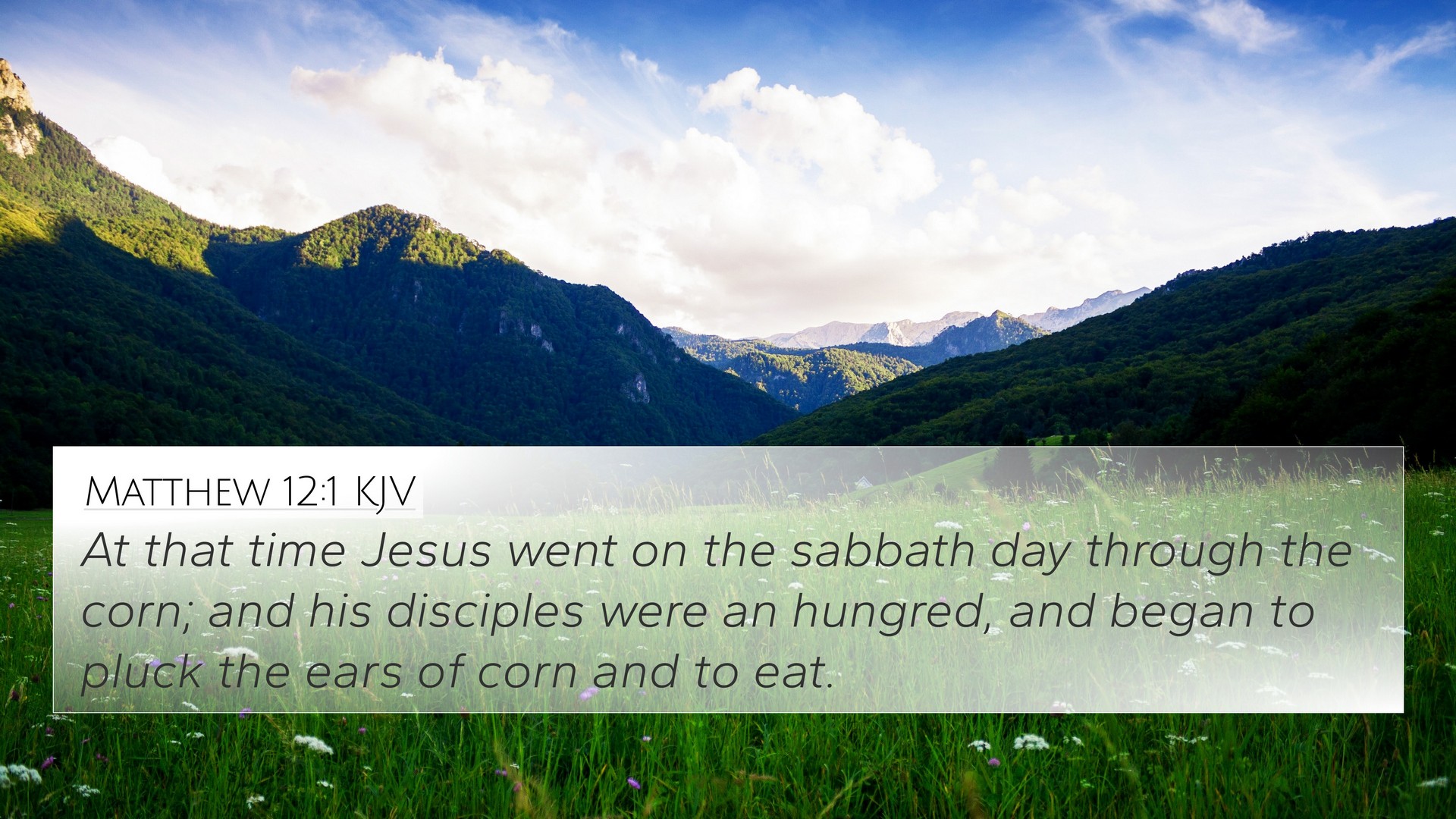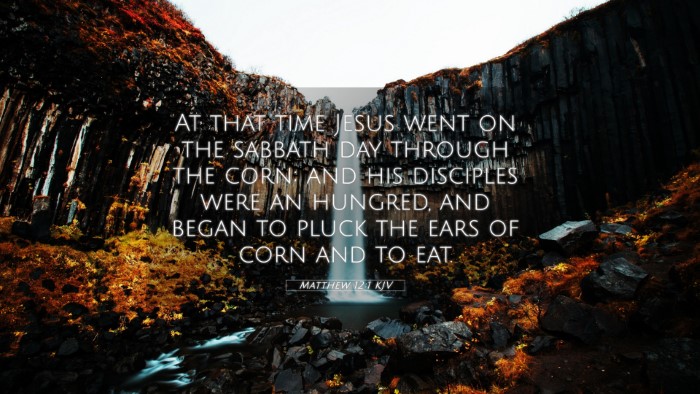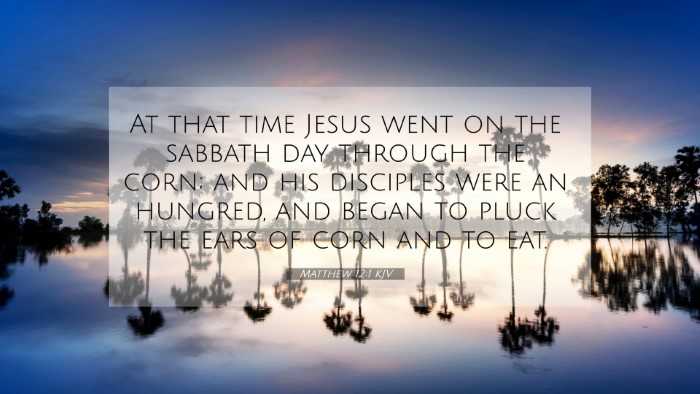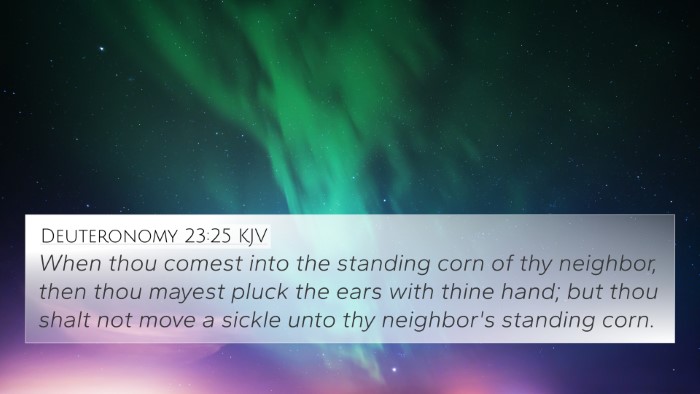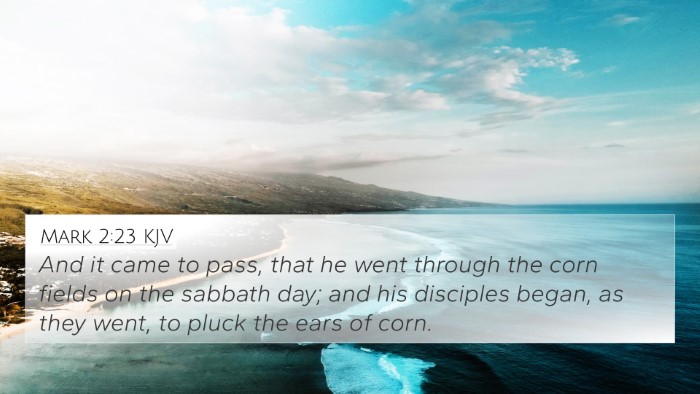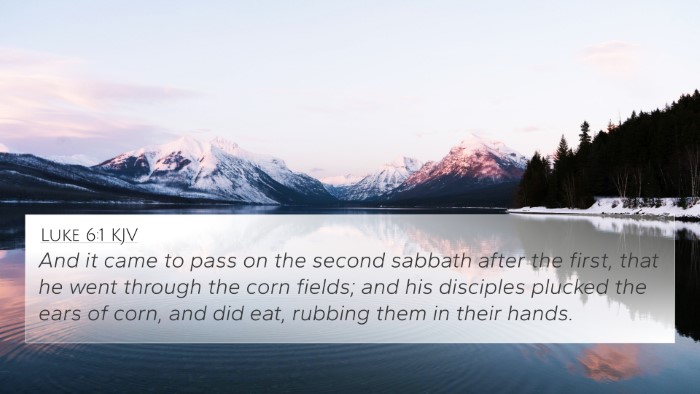Bible Verse: Matthew 12:1
“At that time Jesus went on the Sabbath day through the corn; and his disciples were an hungred, and began to pluck the ears of corn, and to eat.”
Meaning and Interpretation
This verse highlights a significant moment in Jesus' ministry, illustrating both His relationship with the Law and the nature of the Sabbath. The action of Jesus and His disciples was not merely a physical act of hunger but a profound teaching moment that calls into question the rigid interpretations of the Law by the Pharisees.
- Context of the Sabbath: The Sabbath was established as a day of rest as commanded in Exodus 20:8-11. However, the traditions around it had led to an overly strict interpretation that often missed the original intent of rest and mercy.
- Human Need vs. Legalism: The disciples’ act of plucking corn demonstrates that human need (hunger) is more significant than ritualistic compliance to the Law.
- Jesus’ Authority: By allowing this action and later defending His disciples, Jesus asserts His authority over the Sabbath, emphasizing that mercy and human need should prevail over legalistic interpretations of the Law.
Insights from Public Domain Commentaries
Matthew Henry: Henry emphasizes the importance of mercy over sacrifice, arguing that the actions of the disciples reflect a natural response to hunger. He points out that Jesus sought to reveal the heart of the Sabbath law—to do good rather than to be constrained by mere ceremonial compliance.
Albert Barnes: Barnes notes that the Pharisees had added many rules to the original command about the Sabbath, which ultimately led to hypocrisy. He highlights that Jesus was challenging these additional burdens, illustrating the difference between true observance of God's Law and the traditions that distort it.
Adam Clarke: Clarke discusses the essence of the analogy of plucking corn, symbolizing essential human needs, suggesting that even acts done out of necessity should not be condemned, reminding readers that Jesus is the Lord of the Sabbath.
- Humanitarian Principle: All commentators agree that Jesus affirms the principle of mercy, elevating human needs above ceremonial strictness.
- Validity of Needs: They emphasize that the Law was made for the benefit of humanity, not to serve as a burden.
Cross-References
The following Bible verses illustrate connections and provide deeper insight related to Matthew 12:1:
- Exodus 20:8-11: Establishes the Sabbath command and its importance in the Old Testament.
- Mark 2:23-28: A parallel account of the same event, emphasizing Jesus' authority over the Sabbath.
- Luke 6:1-5: Another synoptic account, reinforcing the theme of mercy on the Sabbath.
- Matthew 9:13: Jesus calls for mercy, showing that it was prioritized over sacrifice.
- Hosea 6:6: “For I desire mercy, not sacrifice,” linking back to the intent behind the Law.
- Galatians 5:13: Calls believers to use their freedom to serve one another in love, connecting to the heart of the Sabbath's intent.
- Romans 14:5-6: Discusses differing views on sacred days, emphasizing personal conviction and the importance of leading with love.
- John 7:23: Discusses the healing on the Sabbath and relates to the exceptions made for human need.
Thematic Connections
Through careful Bible verse cross-referencing, one can explore significant themes that connect various scriptures concerning the Law, mercy, and the nature of Jesus as our Sabbath rest.
- The Role of the Pharisees: Their traditions often conflicted with the intent of God’s commands, showcasing the necessity of understanding the heart behind the Law.
- Human Need: Numerous instances in the Gospels emphasize Jesus' response to needs over strict adherence to the ceremonial laws.
- Jesus as the Fulfillment of the Law: This event is among many that illustrates how Jesus fulfills the Law through His actions and teachings rather than abolishing it.
Conclusion
Matthew 12:1 serves as a poignant reminder of Jesus' mission to demonstrate love and mercy within the bounds of God’s commandments. It challenges believers today to reflect on the true essence of their faith, encouraging a compassionate understanding of God’s Word that transcends mere legalism.
